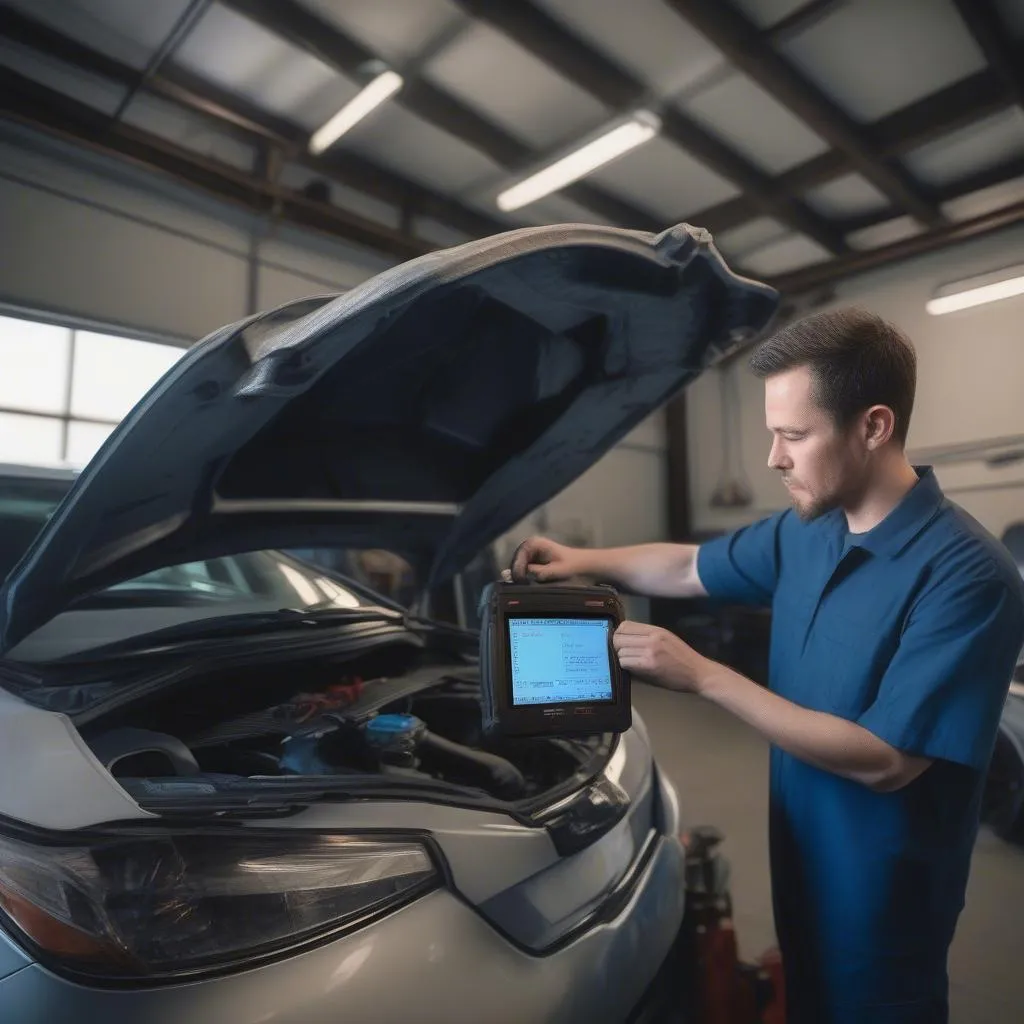A blinking anti-theft light on your dashboard is frustrating, especially when it’s accompanied by an engine that refuses to start. This scenario is a common headache for car owners, but understanding why it happens can save you a lot of stress and potentially expensive trips to the mechanic.
This guide will walk you through the common causes, how to identify the specific problem with your car, and offer potential solutions.
Understanding Your Car’s Anti-theft System
Before we delve into the reasons behind a blinking anti-theft light, it’s essential to understand how these systems are designed to work.
Modern vehicles have sophisticated anti-theft systems that prevent unauthorized access and theft. This system, often called an immobilizer system, uses a transponder chip embedded in your car key. When you insert your key into the ignition or bring a keyless fob near the sensor, the transponder chip sends a signal to the vehicle’s computer. If the signal is recognized and authenticated, the vehicle starts normally. However, if the signal is not recognized or there’s a system malfunction, the anti-theft system kicks in, preventing the engine from starting and triggering a blinking security light.
Common Causes of a Blinking Anti Theft Light and Engine Starting Problems
1. Weak or Dead Car Battery
One of the most common reasons for this issue is a weak or dead battery. The anti-theft system requires a certain amount of power to function correctly. If your battery is low, it may not be able to provide enough power to both start the engine and run the anti-theft system, leading to a conflict.
2. Faulty Ignition Switch
The ignition switch is another crucial component in the starting process. A faulty ignition switch might not be able to send the correct signal to the immobilizer, causing it to believe the wrong key is being used.
3. Malfunctioning Key Fob
Modern cars often use keyless entry systems. If the battery in your key fob is dead or dying, the signal it sends might be too weak to be recognized by the car, causing the anti-theft system to activate.
4. Immobilizer System Issues
Sometimes, the issue might lie within the immobilizer system itself. A malfunctioning immobilizer control module, faulty wiring, or a problematic antenna ring around the ignition cylinder can disrupt communication between the key and the system.
5. Aftermarket Security System Conflicts
Aftermarket security systems, if not installed properly, can sometimes interfere with the factory-installed anti-theft system, leading to conflicts.
 Car dashboard with a blinking anti-theft light
Car dashboard with a blinking anti-theft light
Identifying the Specific Cause
To fix the issue, you need to pinpoint the exact cause. Here’s how you can troubleshoot the problem:
- Check Your Battery: The easiest place to start is by checking your car battery. If it’s weak or dead, try jump-starting your car. If the car starts, you likely have a battery problem.
- Inspect Your Key Fob: If you have a keyless entry system, replace the battery in your key fob. Try starting the car again to see if that resolves the issue.
- Examine the Ignition Switch: A loose or malfunctioning ignition switch can be trickier to diagnose. Try starting the car in different positions of the ignition switch (without forcing it). If the car starts in an unusual position or feels loose, the ignition switch could be faulty.
Equipment You Might Need
- Voltage Meter: To check your car battery’s voltage.
- Code Reader: A code reader can help identify any stored error codes in your car’s computer, potentially pointing to the root of the problem.
- Basic Tools: Screwdrivers and pliers might be needed to access and replace certain components, like the battery or ignition switch.
Seeking Professional Help
If you’ve exhausted the basic troubleshooting steps and are unable to identify the cause, or if the problem lies within the immobilizer system itself, it’s best to seek professional help.
A qualified mechanic or an auto electrician specializing in automotive electronics can use advanced diagnostic tools to pinpoint the exact problem and perform necessary repairs.
Consider utilizing professional diagnostic services like those offered by Cardiagtech. They can provide remote diagnostics, programming, and software installation services, potentially saving you time and money. For more information on anti-theft systems and how to address related problems, you can explore resources on how to bypass the anti-theft system.
Frequently Asked Questions
Can I bypass the anti-theft system to start my car?
While it might be tempting to try and bypass the anti-theft system, it’s generally not recommended. These systems are designed for your safety, and tampering with them could potentially damage your vehicle’s electrical system or void your warranty.
What should I do if my anti-theft light is constantly on, not blinking?
A constantly illuminated anti-theft light could indicate a different problem with the system, such as a faulty sensor or a wiring issue. It’s best to have your vehicle diagnosed by a professional.
How much does it cost to fix an anti-theft system problem?
The cost of repair varies greatly depending on the specific issue, make and model of your vehicle, and labor costs in your area. A simple battery replacement might be inexpensive, while replacing a faulty immobilizer control module can be significantly more expensive.
 Mechanic using a diagnostic tool on a car
Mechanic using a diagnostic tool on a car
Conclusion
Experiencing a blinking anti-theft light and a car that won’t start can be a stressful situation. However, by understanding the common causes and using the troubleshooting steps outlined above, you can often identify the source of the problem.
Remember, professional help is always recommended if you’re unsure or suspect a complex issue. Platforms like CARDIAGTECH offer specialized diagnostic and repair services, potentially getting you back on the road faster and without the hassle of traditional mechanic visits.
Remember to always consult your vehicle’s owner’s manual and follow recommended maintenance schedules to minimize potential issues with your car’s anti-theft system and ensure your car remains reliable.


